While running an errand today, took some pix of spring in Charlotte.
First is the garden of "Mr. Grier," as he is known to his neighbors. Right in the middle of a pricey part of south Charlotte (near Sardis Rd. and Hwy 51 intersection), the elderly Mr. Grier runs his market garden every year, selling to the neighbors. He loads up his mobile produce stand with veggies 3-4 days a week and people pay by the honor system. In July and August, this garden will produce unbelievable amounts of vegetables. Even though he doesn't grow organically, I think he is careful about what he puts on the plants.
This is just a portion of the "wall-'o-waters" he sets out to protect his tomato and pepper plants until the threat of frost is past.

You can see the tomato plants beginning to peak out the top. The plastic devices are filled with water that is heated by the sun during the day, the hot water then giving off warmth for the plants during the night.
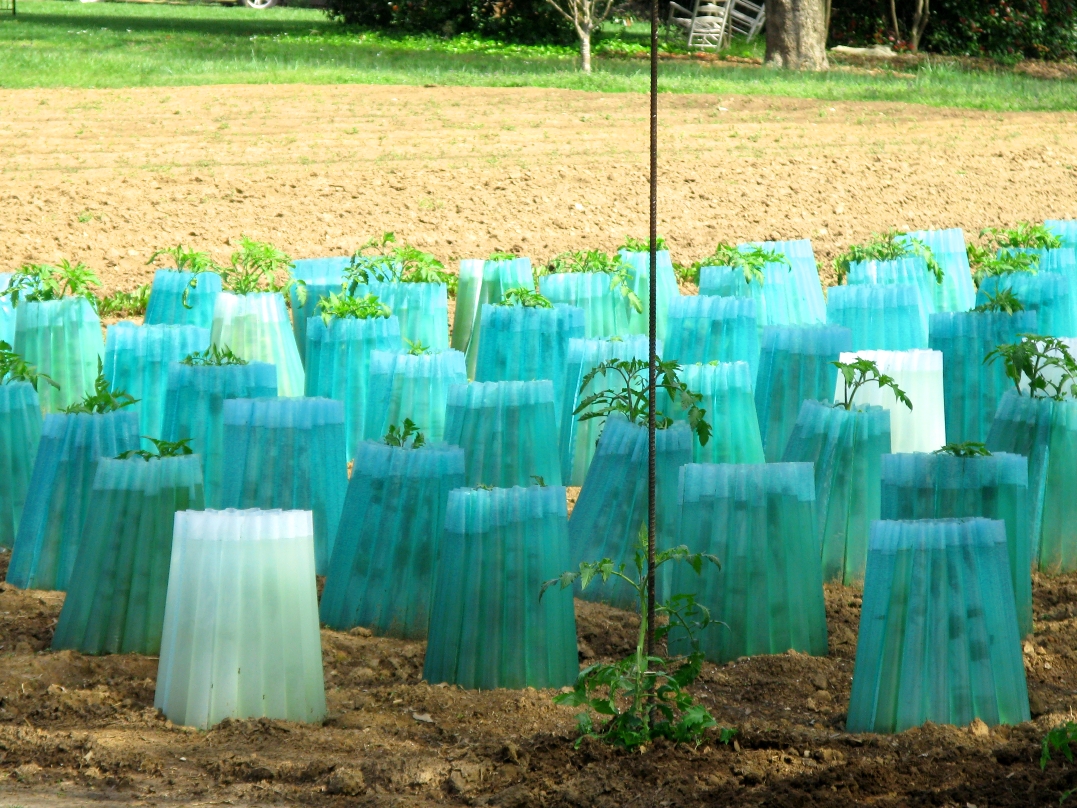
His huge onions beginning to form flower/seed heads:
<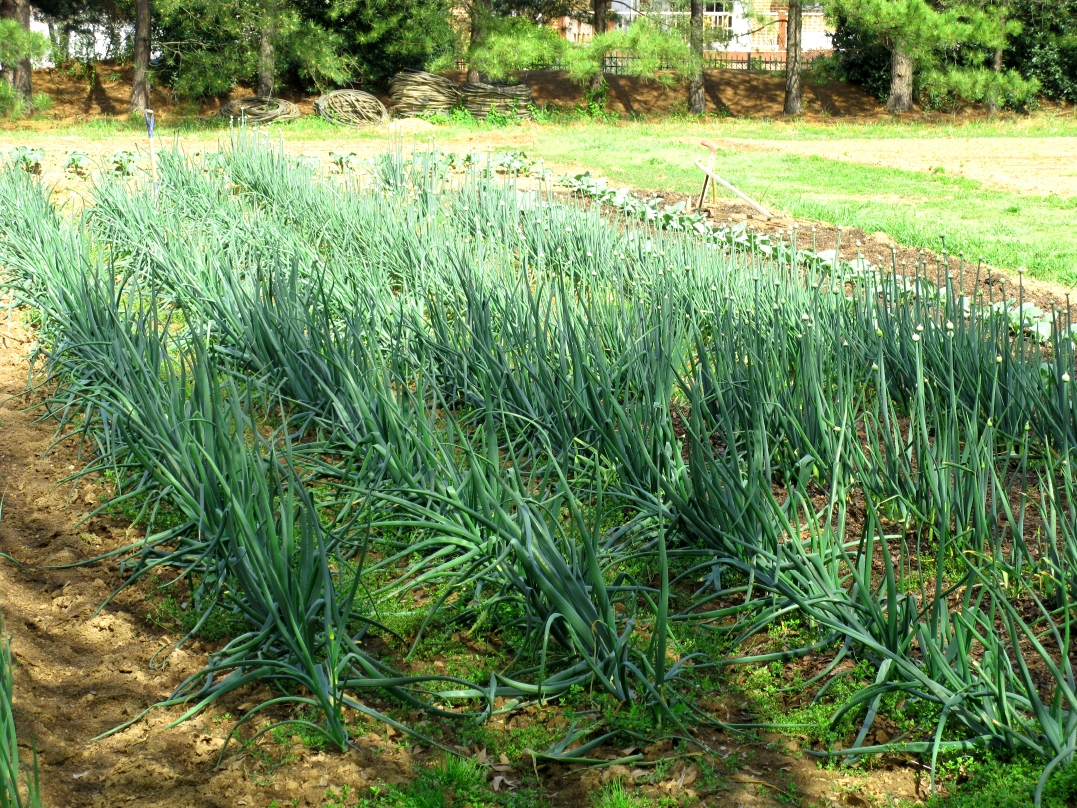
His gigantic compost piles behind his home (you can see the produce stand that he loads up and pulls up near the street with his tractor):
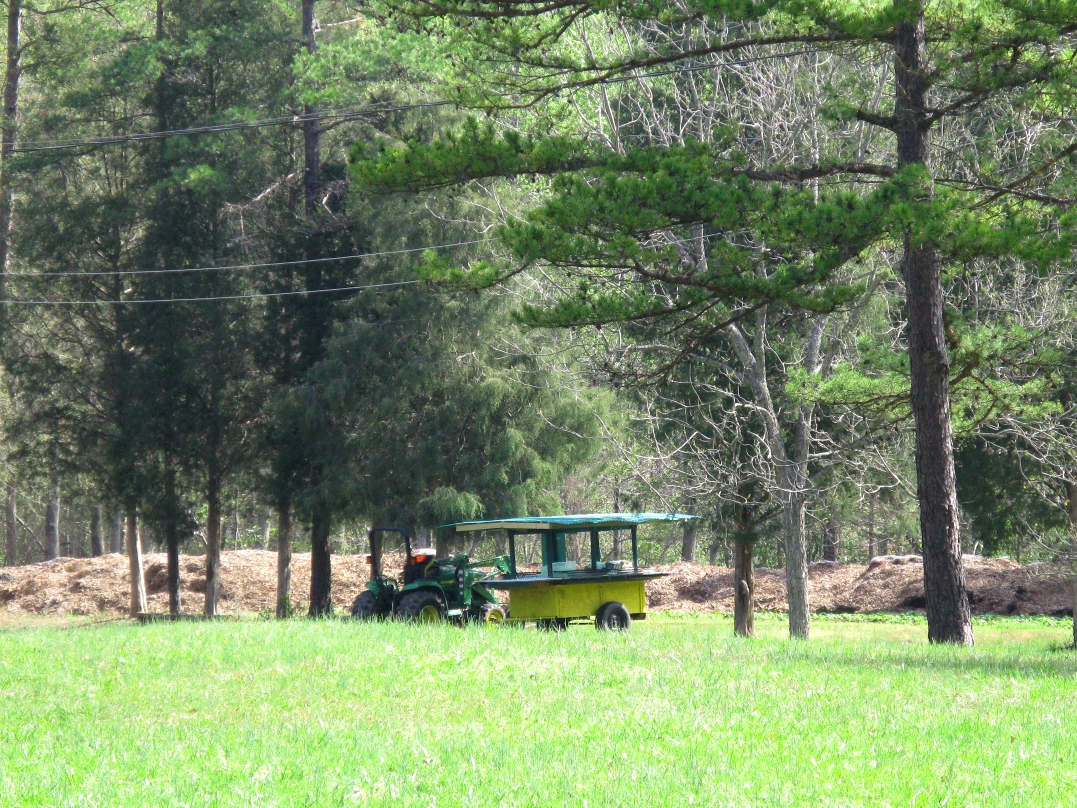
The city of Matthews, a small historic town on Charlotte's south side, is offering a community garden to its residents. They took the lead -- plowed up the land, delivered mulch and plowed it in, ran a water line to the site, etc. Plots (about 30' x 30' each) are available to residents for $10 per growing season. This is an amazing provision by the Matthews town government. It's not an organic or sustainable movement per se, though individual growers could certainly employ organic methods on their plot. Way to go, Matthews!
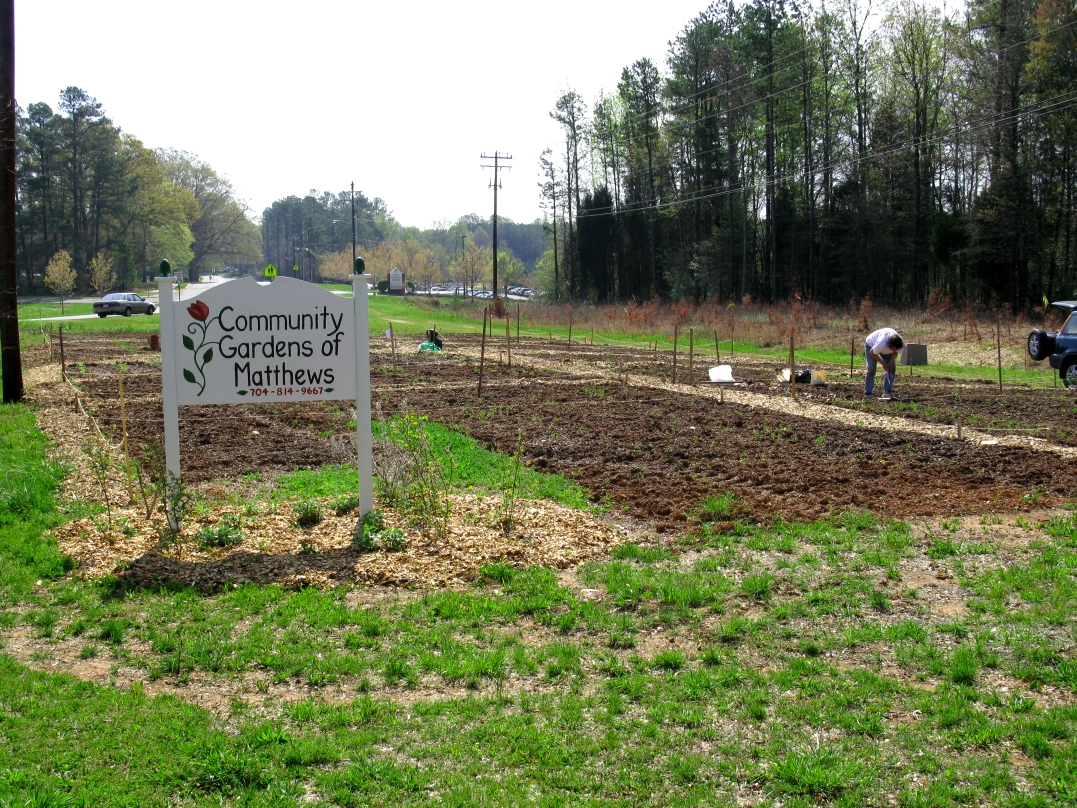
It wouldn't be spring in the south without climbing wisteria vines -- these making it to the top of these 40' tall pines.
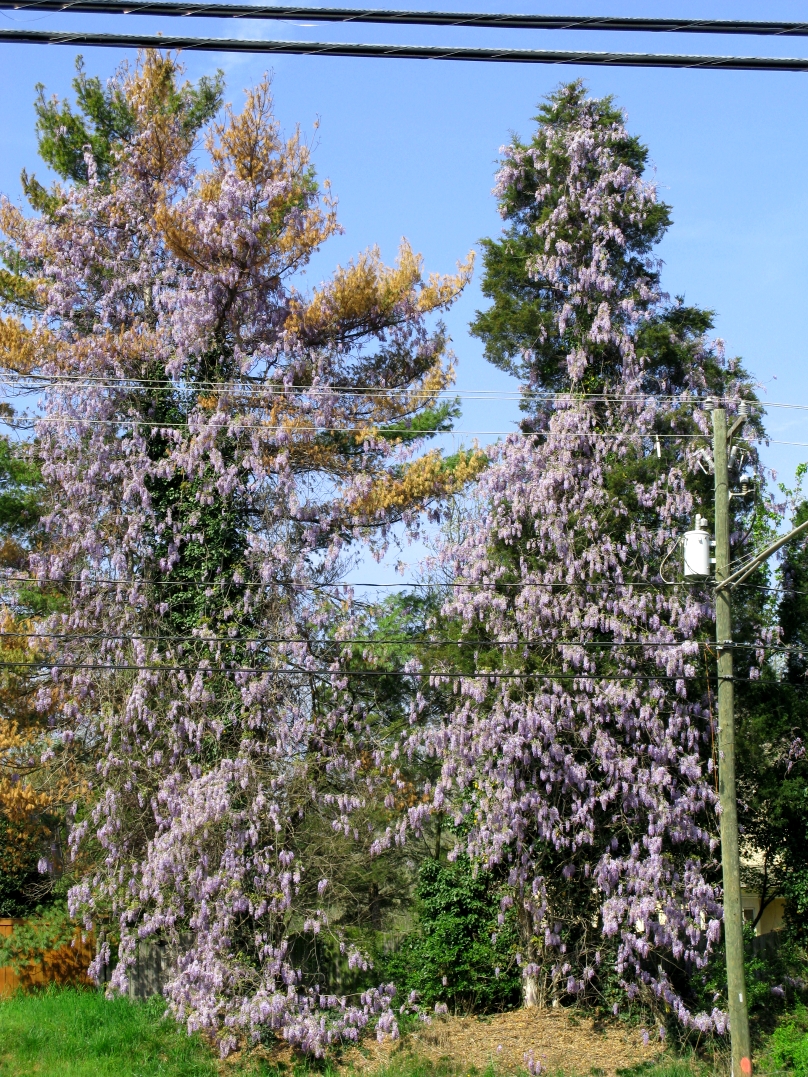
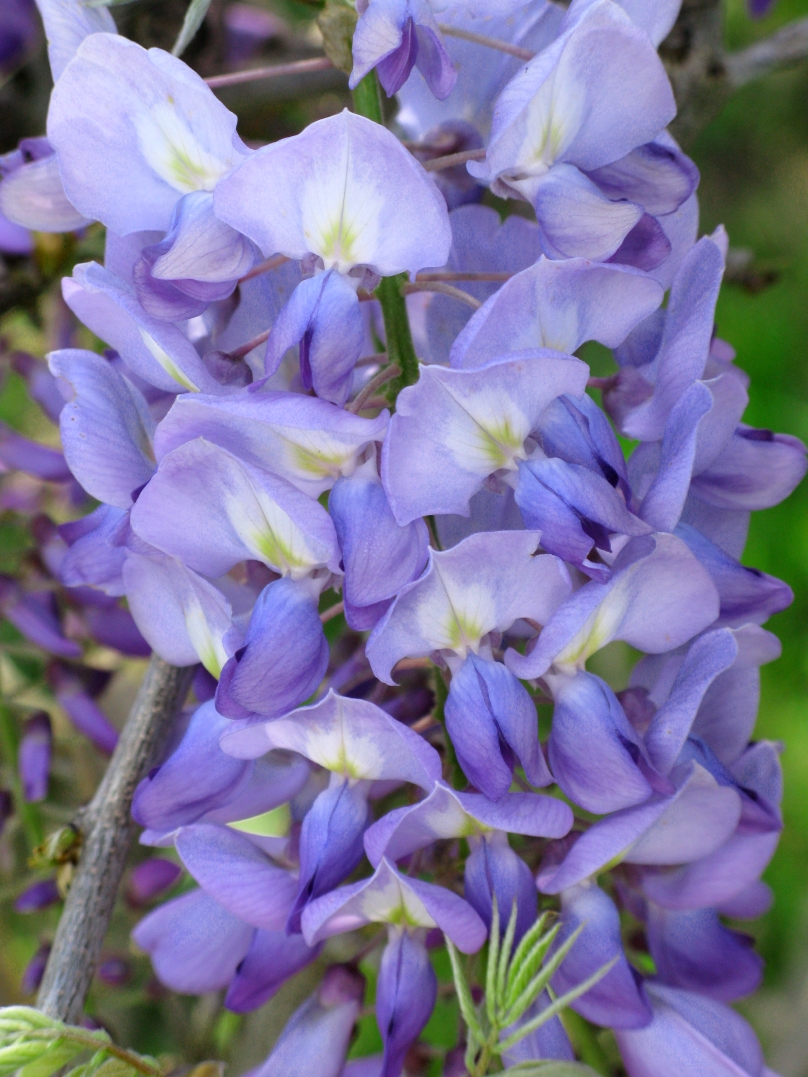
Every time I see wisteria in the south I think of the amazing song by the southern writer/singer Kate Campbell, who knows the south -- its good and its bad -- as well as anyone I've ever read or heard. In her song, "Petrified House," (on her 2003 Monuments CD) she tells the story of an old southern woman, seemingly wealthy and prominent in a prior day, stuck in the past, refusing to acknowledge that the days of Dixie are done. The chorus says,
First is the garden of "Mr. Grier," as he is known to his neighbors. Right in the middle of a pricey part of south Charlotte (near Sardis Rd. and Hwy 51 intersection), the elderly Mr. Grier runs his market garden every year, selling to the neighbors. He loads up his mobile produce stand with veggies 3-4 days a week and people pay by the honor system. In July and August, this garden will produce unbelievable amounts of vegetables. Even though he doesn't grow organically, I think he is careful about what he puts on the plants.
This is just a portion of the "wall-'o-waters" he sets out to protect his tomato and pepper plants until the threat of frost is past.

You can see the tomato plants beginning to peak out the top. The plastic devices are filled with water that is heated by the sun during the day, the hot water then giving off warmth for the plants during the night.

His huge onions beginning to form flower/seed heads:
<

His gigantic compost piles behind his home (you can see the produce stand that he loads up and pulls up near the street with his tractor):

The city of Matthews, a small historic town on Charlotte's south side, is offering a community garden to its residents. They took the lead -- plowed up the land, delivered mulch and plowed it in, ran a water line to the site, etc. Plots (about 30' x 30' each) are available to residents for $10 per growing season. This is an amazing provision by the Matthews town government. It's not an organic or sustainable movement per se, though individual growers could certainly employ organic methods on their plot. Way to go, Matthews!

It wouldn't be spring in the south without climbing wisteria vines -- these making it to the top of these 40' tall pines.


Every time I see wisteria in the south I think of the amazing song by the southern writer/singer Kate Campbell, who knows the south -- its good and its bad -- as well as anyone I've ever read or heard. In her song, "Petrified House," (on her 2003 Monuments CD) she tells the story of an old southern woman, seemingly wealthy and prominent in a prior day, stuck in the past, refusing to acknowledge that the days of Dixie are done. The chorus says,
She believes somehow that nothing has changed
Even though Sherman left Georgia in flames
Cotton's still king and the south didn't fall
As long as wisteria climbs up the wall.
Even though Sherman left Georgia in flames
Cotton's still king and the south didn't fall
As long as wisteria climbs up the wall.
That verse reminds me of my grandmother Gan, who lived and died in south Alabama, who loved Robert E. Lee and the Confederate flag as much as life itself. Somewhere I have an 8 x 10 picture of her standing in her back yard beside an ancient tree long since conquered by purple wisteria -- just like the vines in the picture above.
Everybody has a "wisteria" of one sort or another -- something that reminds them of the way life used to be. As long as our wisteria appears on schedule, we can deny that things have changed; we can refuse to move on with life. Kate Campbell's song reminds me every year, when the wisteria blooms, of the dangers of living in denial of the way life really is.
Everybody has a "wisteria" of one sort or another -- something that reminds them of the way life used to be. As long as our wisteria appears on schedule, we can deny that things have changed; we can refuse to move on with life. Kate Campbell's song reminds me every year, when the wisteria blooms, of the dangers of living in denial of the way life really is.





No comments:
Post a Comment